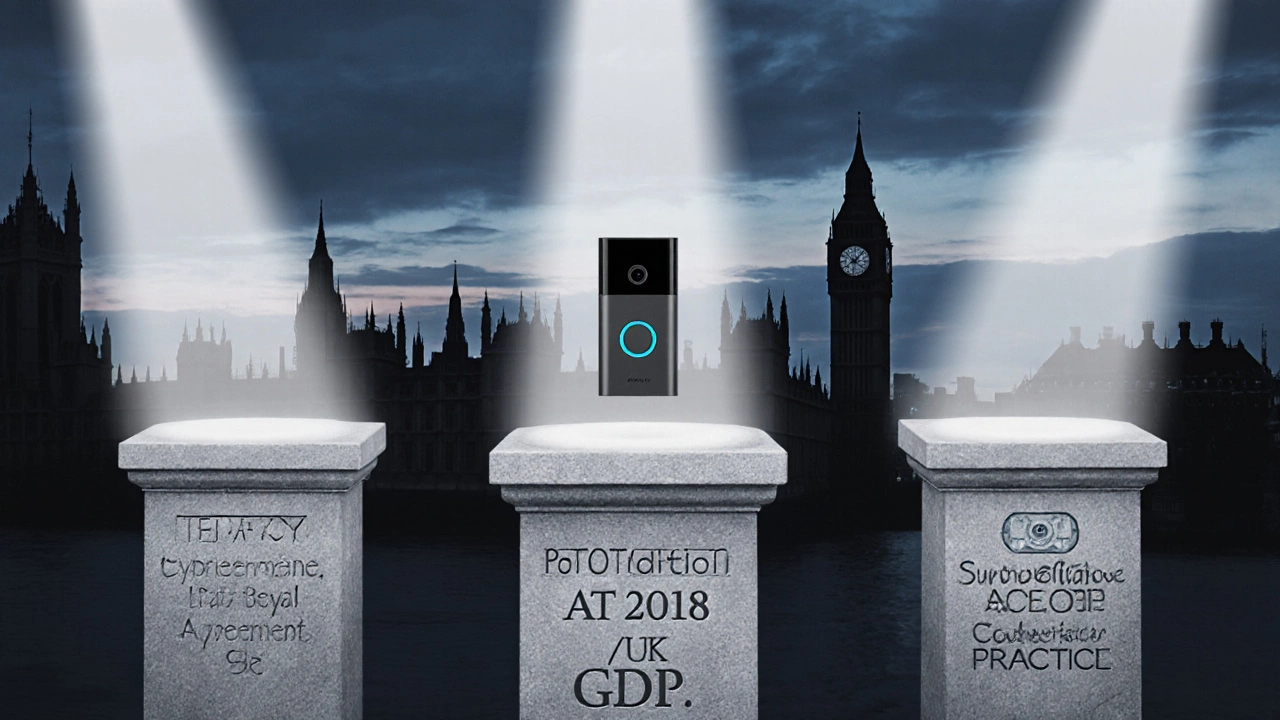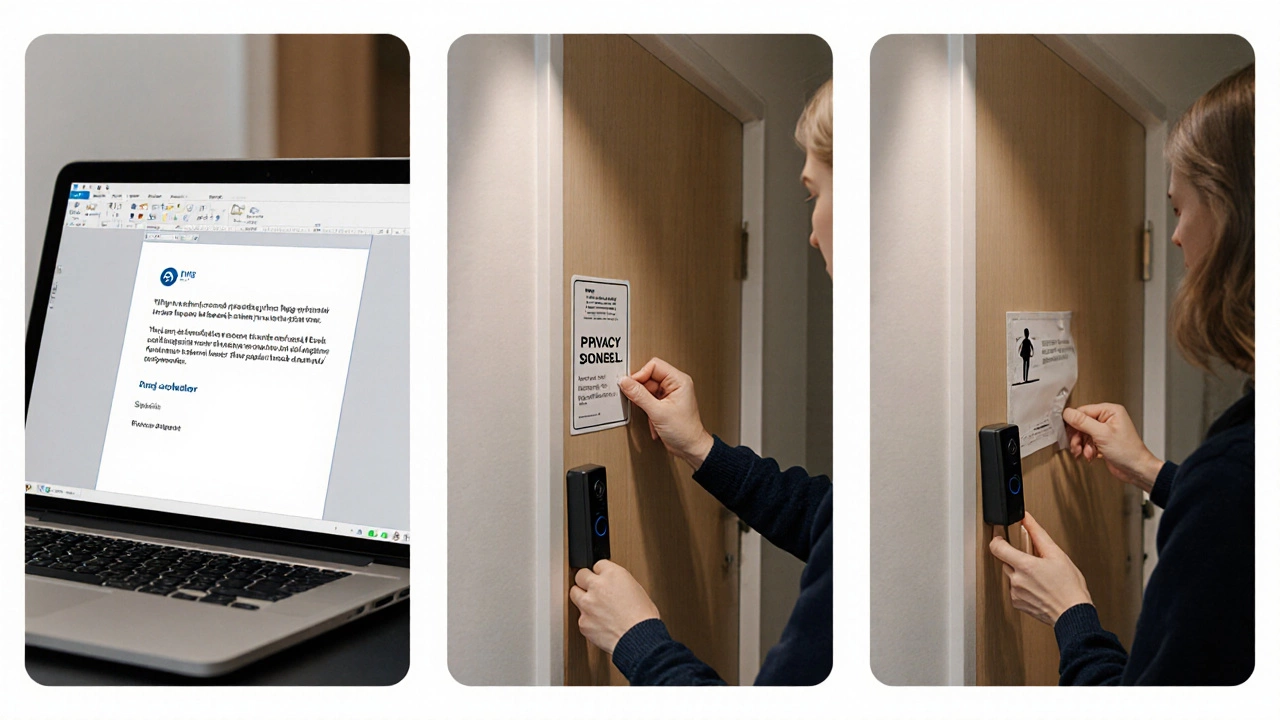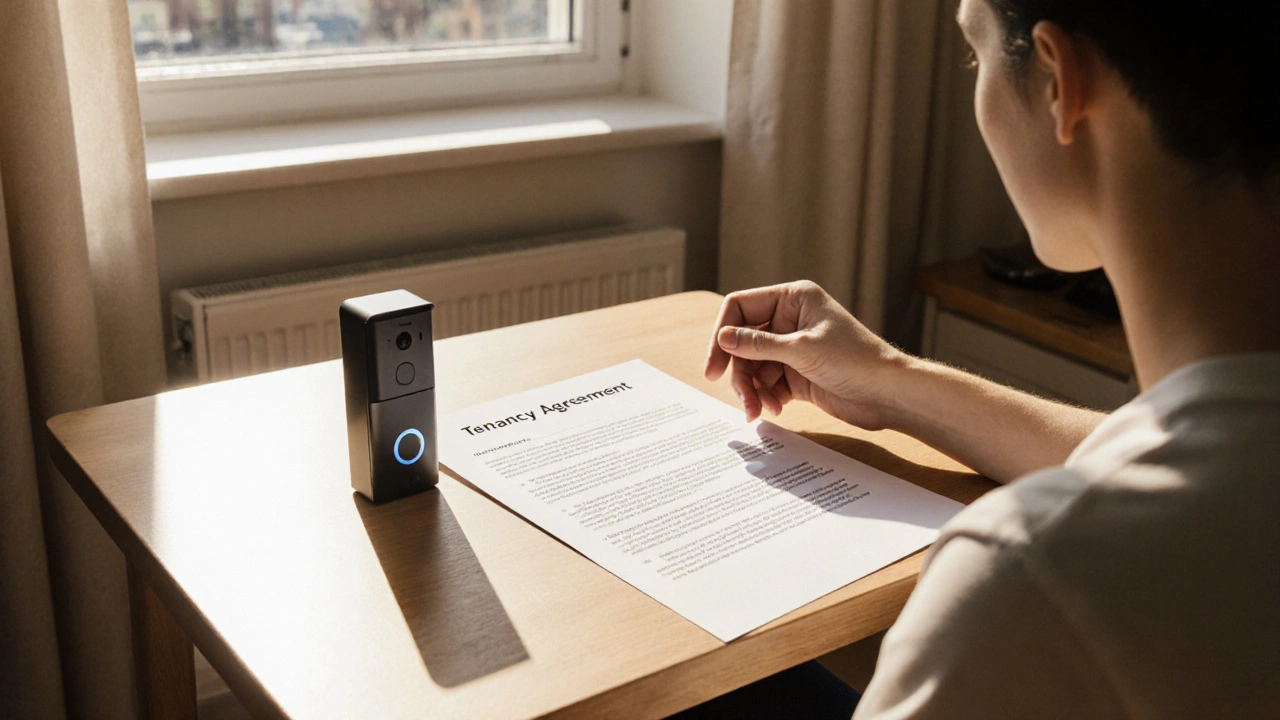Ring Doorbell Legal Checker
Check Your Ring Doorbell Legality
Answer these questions to determine if installing a Ring Doorbell in your UK apartment is legally acceptable.
Legal Assessment Results
Quick Takeaways
- Installing a Ring Doorbell in a UK flat is not automatically illegal, but it hinges on your tenancy agreement and privacy law.
- Landlords can refuse permission if the device breaches building rules or infringes on other residents' privacy.
- You must comply with the Data Protection Act 2018 and GDPR when recording video or audio.
- Follow a clear step‑by‑step process to get written consent and configure the device responsibly.
- If permission is denied, consider alternatives that stay within the lease - for example, a simple peephole camera that records only when you press a button.
Living in a rented flat often feels like walking a legal tightrope. You want the peace of mind that a video doorbell promises, yet you also don’t want to breach a lease or run afoul of UK privacy rules. Below we untangle the web of legislation, lease language, and practical steps, so you can decide whether a Ring Doorbell legal UK move is worth making.
What Exactly Is a Ring Doorbell?
Ring Doorbell is a smart video doorbell that streams live video to a smartphone app, records motion‑triggered clips, and can be linked to other smart‑home devices. It connects via Wi‑Fi, offers two‑way audio, and stores footage either locally on a battery‑powered device or in the cloud for a subscription fee.
Legal Landscape in the UK
The UK does not have a blanket ban on video doorbells, but three legal pillars shape what you can and cannot do:
- Tenancy agreement is the contract between tenant and landlord that outlines permissible alterations to the property.
- Data Protection Act 2018 (DPA) and UK GDPR impose strict rules on recording personal data, including video and audio of individuals in public or semi‑public spaces.
- Surveillance Camera Code of Practice (issued by the Home Office) provides guidance for private owners on how to use CCTV‑type equipment lawfully.
How Your Tenancy Agreement Affects Installation
Most leases contain a clause about “alterations or additions to the premises”. If the wording reads “no alterations without landlord consent”, the Ring Doorbell counts as an alteration because it involves mounting hardware and potentially new wiring. Even a battery‑powered model still requires a drill or adhesive mount, which landlords may view as damage.
Typical lease excerpts you might encounter:
- "The Tenant shall not make any structural changes without the Landlord’s written consent."
- "Any fixtures installed by the Tenant must be removed at the end of the tenancy, leaving the property in its original condition."
If your contract includes a “no sub‑letting” or “no cameras in communal areas” rule, you’ll need explicit written permission before proceeding.

Privacy Obligations Under DPA and GDPR
When a Ring Doorbell records video, it captures personal data - faces, voices, and movement. The DPA mandates that you have a lawful basis for processing this data. The most relevant bases for a private tenant are:
- Legitimate interests - you can argue that safeguarding your home is a genuine interest, but you must balance that against neighbours’ rights.
- Consent - you could ask neighbours for written consent, though in practice this is rarely required for a device that records only when you’re home.
Key compliance steps:
- Post a clear sign near the door stating that video recording is in operation. This satisfies the “fair processing notice” requirement.
- Configure the device to record only when motion is detected at your front door, not the communal hallway.
- Store footage securely, preferably using Ring’s encrypted cloud with two‑factor authentication.
- Delete recordings you no longer need within a reasonable timeframe (most users keep footage for 30 days).
Building Regulations and Fire Safety
While the Ring Doorbell itself is low‑voltage and does not affect fire safety, some leaseholders worry that additional devices could obstruct fire exits or interfere with alarm systems. In England and Wales, the Building Regulations Part B (Fire Safety) does not specifically mention video doorbells, but it does require that any installed equipment does not impede escape routes.
Practical tip: Choose a model that mounts just above the door frame and avoid placing it on fire‑rated doors or panels.
Step‑by‑Step: Getting Permission and Staying Legal
- Review your tenancy agreement. Look for any clauses about alterations, fixtures, or cameras.
- Draft a concise request. Explain what you want to install, how it works, and reassure the landlord that it won’t damage property or breach privacy.
Sample email:
Subject: Request to install a Ring Doorbell
Dear [Landlord/Agent],
I would like to install a Ring Doorbell on the front door of my flat. The device is battery‑powered, requires only a small adhesive mount, and will be removed at the end of my tenancy. I will place a visible sign indicating video recording and will ensure that no footage of communal areas is stored. Please let me know if you need any additional information.
Thank you,
[Your Name] - Obtain written consent. Email or a signed letter is ideal. Keep a copy for your records.
- Install the device responsibly. Use the manufacturer’s mounting template, avoid drilling into fire‑rated doors, and ensure the unit is level.
- Set privacy‑friendly settings. Turn off audio recording if not needed, limit motion zones to the front door, and enable the “privacy mode” when you’re away for extended periods.
- Maintain documentation. Keep a log of consent, installation photos, and any sign you’ve posted. This can be useful if a dispute arises.
What If Your Landlord Says No?
Denial can feel frustrating, but you have options:
- Negotiate a compromise - perhaps a wired model that you agree to remove entirely at move‑out.
- Use a non‑recording solution like a traditional peephole or a doorbell with a visual indicator only.
- Check whether the building’s concierge or intercom system already offers video functionality; many modern blocks have integrated solutions that the landlord may already approve.
Remember, breaching lease terms can lead to forfeiture of part of your deposit or even eviction, so it’s never worth installing without permission.

Comparison of Key Legal Considerations
| Factor | Ring Doorbell | Alternative (peephole camera) |
|---|---|---|
| Lease permission | Often required (mounting & power) | Usually not needed (no mounting) |
| Data protection | Records video/audio - must comply with DPA/GDPR | Only records when manually triggered - lower risk |
| Installation impact | Small drill or adhesive, may affect fire‑rated doors | No drilling, purely visual |
| Cost | £199 device + optional subscription | £30-£50 one‑off |
| Convenience | Live alerts to phone, remote viewing | Limited to visual check at the door |
Common Pitfalls and How to Avoid Them
- Ignoring the lease. Even a seemingly harmless adhesive mount can be deemed a breach.
- Failing to post a privacy sign. Without clear notice, neighbours could claim unlawful surveillance.
- Leaving audio on by default. Audio is higher‑risk personal data; disable it unless absolutely necessary.
- Storing footage indefinitely. GDPR requires you to keep data only as long as needed - set automatic deletion.
- Mounting in communal corridors. Only the front door of your own flat is permissible; communal spaces are governed by the building’s own policies.
Next Steps for Tenants
Take a moment to scan your tenancy agreement. If you find any clause about alterations, draft a concise request to your landlord today. While you wait for a response, explore the Ring app’s privacy settings so you’re ready to configure the device responsibly once approved.
Frequently Asked Questions
Do I need my landlord’s consent to install a Ring Doorbell?
Yes. Most tenancy agreements require written permission for any fixtures or alterations, including a video doorbell. Getting consent in writing protects both you and the landlord.
Is it illegal to record video of neighbours from my flat’s front door?
Recording video that captures neighbours in a communal hallway can breach the Data Protection Act and GDPR. Keep the camera’s field of view limited to your own doorstep and post a clear sign indicating recording.
What privacy sign should I use?
A simple sticker that says, “Video surveillance in operation - recorded by Ring Doorbell” meets the fair‑processing notice requirement. Place it at eye level near the unit.
Can I keep the footage forever?
No. GDPR expects you to delete personal data when it’s no longer needed. Most Ring subscriptions auto‑delete after 30 days; you can also manually purge older clips.
If my landlord refuses, am I allowed to install a hidden camera?
Definitely not. Installing any recording device without consent breaches the tenancy agreement and can be considered illegal surveillance. It may lead to eviction and legal action.

